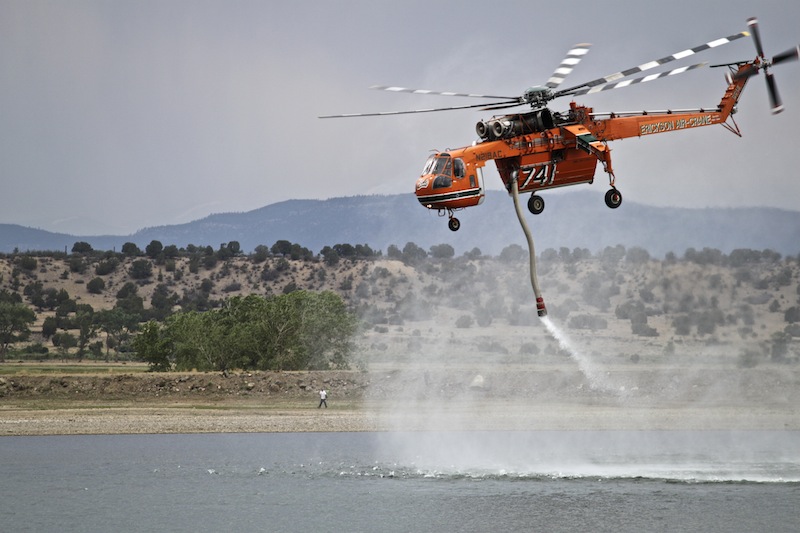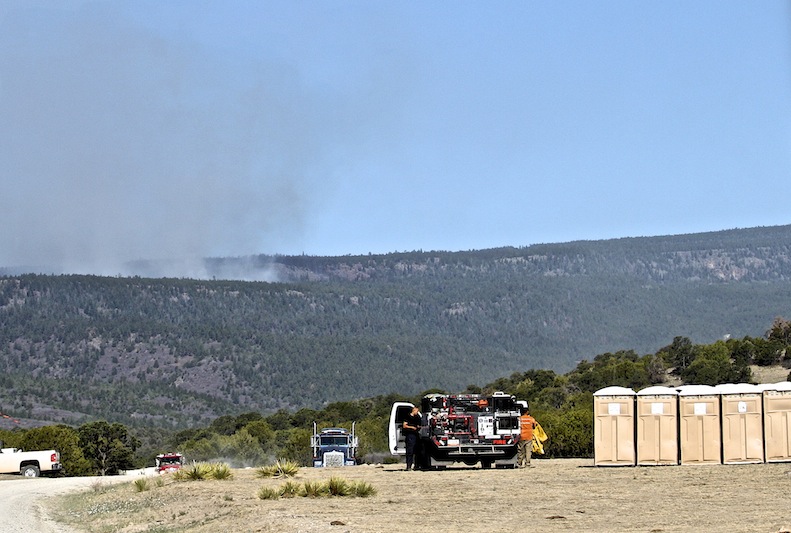I had a busy week of traveling and these are some of my notes from the trail:
Welcome back. From Cimarron, New Mexico going north on I-25 you pass through Raton and then Colorado Springs before coming into Denver. Everywhere along the route this year you see firemen, in gas stations, grocery stores and restaurants there are men and women wearing t-shirts printed with the name of their town and fire department. You quickly realize that firefighters have come from all over the country to help the local departments.
Forest fires are as common in this part of the country as tornados in Oklahoma and like tornados they can have tragic consequences, destroying homes and personal property.
Yet in the aftermath of this devastation you find the same willingness of people to help one another that I have witnessed here in Oklahoma. I believe that this is called American pride and I’m happy to report that it is alive and well.
When I got to Denver I had the chance to go to the top of Lookout Mountain where there’s a view you don’t want to miss if you’re in the area. There is also a man buried on the mountain that I’m sure you have all heard of. Born on February 26, 1846 William Frederick Cody was destined for a life of fame and glory. When he was 9 years old he had his first job herding cattle for $25 a month and by fourteen he’d traveled to Pike’s Peak to pan for gold and also become the youngest rider ever for the Pony Express. Records show that he once rode 322 miles in 21 hours and 40 minutes, wearing out 20 horses along the way. During the Civil War, Cody was a member of the 7th Kansas Volunteer Calvary and was awarded a Medal of Honor for his work as a scout.. After the war he got a job hunting buffalo for the railroad and in 8 months he accounted for the killing of 4,280 buffalo, earning the name “Buffalo Bill.”
In 1882 Cody put together what is thought to be the first organized rodeo in the United States and the rest is history. With performers from Annie Oakley to Sitting Bull, Buffalo Bill’s Wild West Show became a hit around the world. The show toured extensively across the States and throughout Europe, traveling with hundreds of cast members as well as horses, cattle and buffalo. The road to fame was also filled with tragedy for Cody. Over the years three of his children died, he lost all of his money and eventually had to sell the show. Cody gave his last performance in 1916 while he was working for the Sells-Floto Circus. The legend died on January 10, 1917 at his sister’s house in Denver and laid in state at the Colorado State rotunda. An estimated 25,000 people paid their respects when Buffalo Bill Cody was buried at the top of Lookout Mountain as he requested.
This week’s scoop: if you’re in Denver don’t miss the view I mentioned and don’t pass up a chance to visit the Buffalo Bill Museum and Grave on the mountain. The museum was lovingly organized by Cody’s stepson Johnny Baker in honor of a very special man. The fascinating displays about his life and the Wild West Show make it is well worth the short drive from Denver.
Jumping from Buffalo Bill to Shirley McLaine’s show at the Osage Event Center in Tulsa last Saturday night, I ‘m wearing out a few horses myself. Like Cody, McLaine is a legendary figure in show business and her one woman show traced her career from the early age of 14 when she got her start on Broadway in a revival of Oklahoma! to her present role in the hit series Downton Abbey at 80+. I expected some great stories and that’s exactly what I got- a who’s who of Hollywood past and present. A note about this venue; I’ve seen several shows here and the seating is great, very up front and personal.
There was another reason for my hasty return from Denver on Saturday and that was to honor a man who I knew for over 50 years. His obituary was long as it should be for a veteran, husband, father and servant of God. L.G. Beard died on Friday, June 15th. He was 93. His wife of 56 years, Ruth Beard, died in 2001. Together the two were fine neighbors for a boy growing up.
Till next time I’ll see ya down the road……
#


